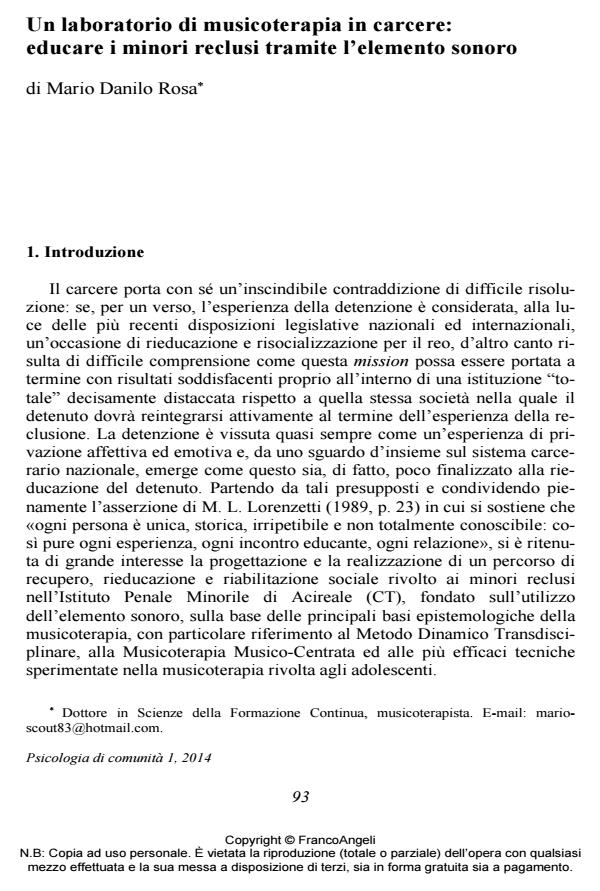A music therapy laboratory in prison: educating imprisoned minors through the sound
Journal title PSICOLOGIA DI COMUNITA’
Author/s Mario Danilo Rosa
Publishing Year 2014 Issue 2014/1
Language Italian Pages 7 P. 93-99 File size 33 KB
DOI 10.3280/PSC2014-001008
DOI is like a bar code for intellectual property: to have more infomation
click here
Below, you can see the article first page
If you want to buy this article in PDF format, you can do it, following the instructions to buy download credits

FrancoAngeli is member of Publishers International Linking Association, Inc (PILA), a not-for-profit association which run the CrossRef service enabling links to and from online scholarly content.
Liberal art courses have given a great contribution to the understanding of juvenile deviance phenomena by offering several strategies in order to make the experience of imprisonment - when it is unavoidable - be an opportunity for real re-education. This work shows how music therapy, which was born aiming at improving the quality of life by means of the sound (music, sound, rhythm), is employed in its teaching shape for being effective and innovative within correctional institutions. The main phases of planning, achievement and assessment in a music therapy laboratory are shown. This laboratory took place in the juvenile prison in Acireale (Catania, Italy), drawing attention to the results of the path, its strong points and weak ones.
Keywords: Music therapy, prison, deviance, minors, educating, laboratory.
Mario Danilo Rosa, Un laboratorio di musicoterapia in carcere: educare i minori reclusi tramite l’elemento sonoro in "PSICOLOGIA DI COMUNITA’" 1/2014, pp 93-99, DOI: 10.3280/PSC2014-001008